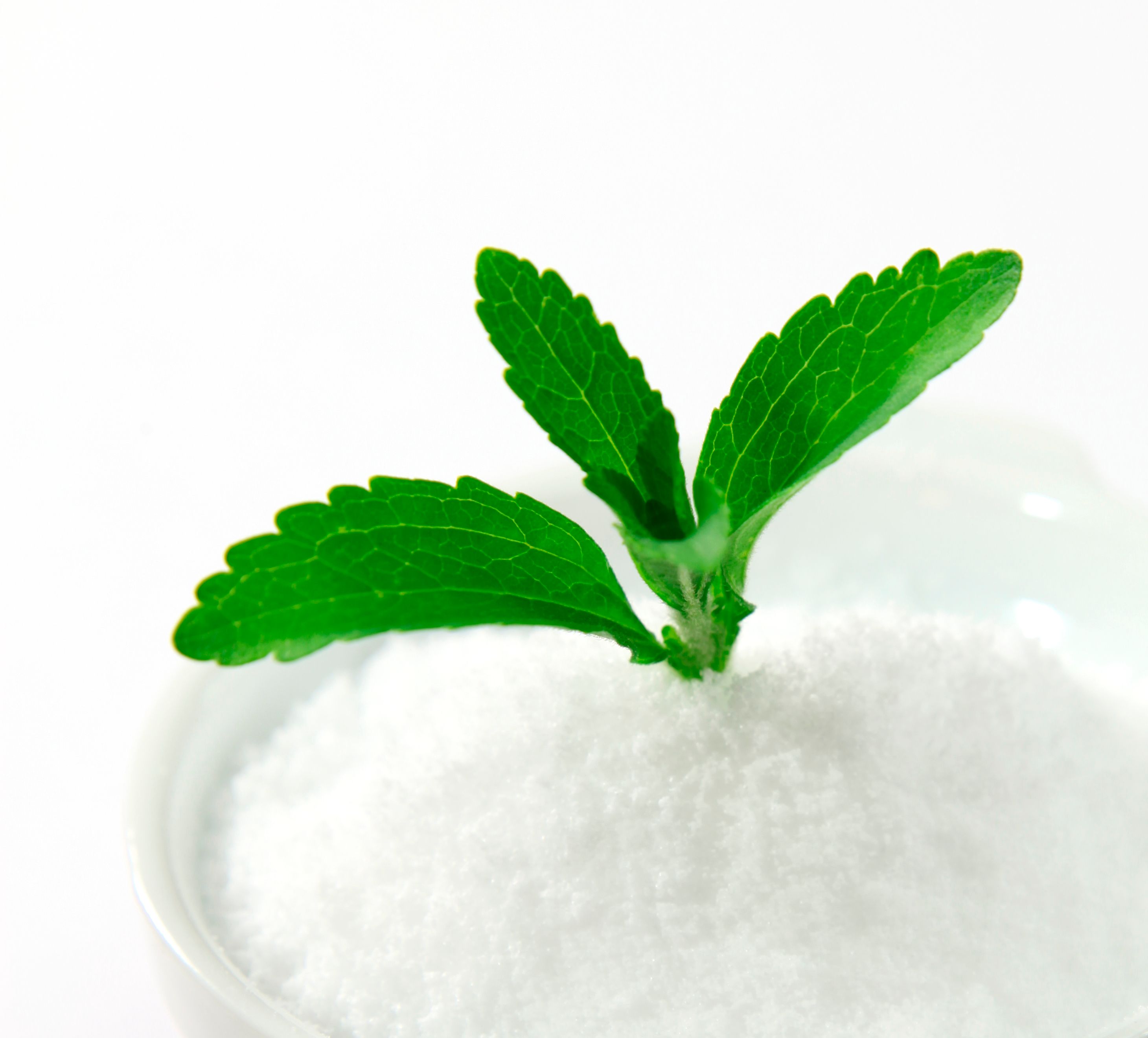Cargill’s Reb M Reb D Fermented Stevia Will Be Commercial in 2016, SupplySide West Report
Beverages, especially carbonated soft drinks, will be the key market out the gate, Cargill says.
Photo © iStockphoto.com/Dirk Richter

Cargill (Minneapolis) gave SupplySide West attendees a first taste of its new blend of fermentation-derived steviol glycosides Reb M and Reb D. The company said it would start supplying the new blend, EverSweet, next year.
“Today is really the introduction to the market to gauge interest and give people a chance to taste it, and then we can start sampling customers, because most people’s formulation time is 12-18 months. So we want to give them a head start. And then we plan on being commercial in 2016,” said Andrew Ohmes, global commercial manager, Corn Milling, North America, Cargill.
Key Cargill customers are now sampling EverSweet. Beverages will be a target market out the gate. “Beverage is usually where we start. That’s obviously where the big volume is, and that’s where the biggest challenge is specifically in carbonated soft drinks. But it will easily move into yogurts, dairy beverages, baking, or even supplements,” Ohmes said.
As a fermented sweetener, EverSweet stands apart from Cargill’s other stevia offerings that focus strictly on traditional stevia leaf extraction. The company's Truvia Reb A stevia is derived from the leaf, and its ViaTech system to determine best glycoside ratios, introduced last March, also revolves around leaf glycosides.
Compared to these other stevia sweeteners, EverSweet offers some important formulation advantages, Ohmes said. “Reb M and Reb D and the EverSweet product has a better temporal profile that’s more sugar like than other stevia products-better up-front sweetness, less sweet linger, and virtually no bitterness at all. So you get a much more rounded sweetness.”
What this means is that in a carbonated soft drink, for instance, the company can achieve up to 100%, zero-calorie sweetener substitution with EverSweet, whereas 100% replacement was not possible with the previous technologies. Before, Ohmes said, with “a high-Reb A product, you could probably do a 30% replacement, and it tastes pretty good. ViaTech will easily get you to 70%, and depending on the application might go all the way to 100%. But there might be a gap getting that last little bit, that last 15% or so." But EverSweet can get to the 100% replacement easily, while maintaining a desirable taste profile, he said. Carbonated soft drinks are one of stevia's most desirable markets. Even with its preexisting technologies, Ohmes said, “We couldn’t reach the highest carbonated soft drinks. As you go to higher and higher levels [of stevia], you have the bitterness, the linger, the bad attributes, not as much up front sweetness, and then the overall sweetness was lacking.” Now, with EverSweet, he said, companies may not even need to use-or at least reduce their use of-taste maskers that are otherwise so often required to hide stevia's bitter or licorice notes.
Stevia Fermentation
Fermentation-derived steviol glycosides offer numerous advantages. Most notably, they allow a business to produce some of the sweetest glycosides in the stevia leaf that are otherwise generally present in very small amounts in the natural leaf. Cargill says that some of the sweetest glycosides like Reb M are present in the leaf only at a percentage of around 1%; by contrast, Reb A occurs at up to 12% of the leaf. If a company were to extract those glycosides traditionally from the leaf, there would be a lot of unused leaf wastage left over, or, at the very least, a lot of leftover Reb A. But through fermentation, the company can produce just the same target glycoside that exists in the leaf, in scalable amounts, cost-effectively, and it can also sidestep any environmental challenges of traditional leaf agriculture. (When asked whether companies would ever consider using fermentation to produce Reb A, Ohmes said, “I think there are some out there that have looked at that. For us, it doesn’t make a lot of sense to do Reb A in this manner because you can produce Reb A relatively inexpensively from leaf and you still have all the taste issues [associated with Reb A], so why produce something that has taste issues where you have a much better tasting product with this product [EverSweet]?”
Some might call stevia fermentation synthetic because no part of the stevia leaf is involved in the process. In Ohmes’s words, with EverSweet, Cargill is “recreating the sweetness.” Ohmes said that the company is “transparent about how it’s made. We’re using an age-old process to solve a modern problem.”
On its website Q&A, Cargill addresses questions about fermentation and whether EverSweet would be considered a genetically modified organism (GMO). It says, “The sweet parts produced by the yeast-Reb M and Reb D-are identical to the Reb M and Reb D found in a stevia leaf. The baker’s yeast used to produce EverSweet is genetically modified. However, after the yeast produces Reb M and D, the yeast is completely filtered out, leaving only the great tasting, zero-calorie sweetener. Laws and regulations vary significantly from country to country. In some geographies the EverSweet product would not be required to be labeled as a GMO.”
Ohmes described the process thusly: “We use a baker’s yeast, and then we understand the enzymatic pathways that the leaf uses to produce Reb M and Reb D in the leaf. We take those same pathways and we insert them into the yeast using traits from stevia, blackberry, rice, and some others. We then feed the yeast, just like you would with alcohol fermentation or in bread. You give it a carbohydrate. So the simple sugars go in-this could be dextrose from corn, it could be sucrose from sugarcane. The fermentation happens, and then we deactivate the yeast and remove the yeast, so what you’re left with is EverSweet, which is just the same exact glycosides as what occurs in the leaf but made by fermentation.” The company adds that it uses genes from stevia and other plants like blackberry and rice because these genes “perform the same function as the genes in the stevia plant, but more efficiently. This enables our yeast to become a mini-factory, converting simple sugar into Reb M and Reb D far more efficiently and in much greater quantity than a stevia plant.”
Ohmes pointed out that on a food or beverage label, companies would still be able to label the ingredient as “steviol glycosides-because that’s what it is” or as Reb M or Reb D.
Cargill has been working with fermentation specialist Evolva Holding SA (Reinach, Switzerland). Together, the two have been exploring stevia fermentation, moving into pilot production in 2013. Evolva announced publication of its patent application (WO 2014122227) for fermentation-derived Reb M back in August 2014.
Other Cargill competitors, namely PureCircle (Chicago), are focusing on producing the less-common glycosides from the leaf.
Ohmes said Cargill is working on its own Reb D project from the leaf as well. But, for now, it is ready to roll out EverSweet. Ohmes said, “If you think of two paths up the same mountain, we’re going up the fast way. There could be a long road that will eventually get there, but there’s no guarantee it will get there to make Reb M that would be cost-effective and really available in quantities that are necessary.”
When asked if Cargill is working on developing any other of the rarer “letters” of the steviol glycoside “alphabet” (there are approximately 40 known glycosides in the leaf), Ohmes said no. “With the ViaTech portfolio, we built the model around 10 glycosides, and we’re always adding to it. So we have the understanding of what individual glycosides can do when used alone and in combination. So we have that. We don’t have any plans to sell individual Reb F or something like that.”
Demand
Will food and beverage manufacturers and their customers buy into a stevia product that’s no longer naturally extracted from the leaf?
Ohmes said that EverSweet simply gives Cargill customers another option. “This gives our customers another choice. We’re still going to have our leaf-based business and our leaf-based ViaTech, which solves a lot of problems. This gives consumers and our customers another choice, rather than going to maybe a fully artificial sucralose or aspartame. They could have steviol glycoside that occurs in nature, just produced in a little different way.”
And does the company fear whether EverSweet could shrink its own market for naturally obtained glycosides like Reb A?
“Actually, we feel it’s the opposite,” said Ohmes. “It will actually help grow the market. Because this opens up a different market space where stevia hasn’t been able to go before, where steviol glycosides haven’t been able to go before. Zero-calorie carbonated soft drinks is a big one. Growing that market out will only-a rising tide will lift all boats.”
He added, “We’re still very committed to our leaf-based business, and ViaTech products are doing great in the marketplace. And if you look back at our Truvia consumer brand, that value proposition is really all about the leaf, so it’s going to stay that way. And it’s a great product, so it doesn’t’ really need to be messed with. You know, if you’d have given me one of our ViaTech products back when I started at the company eight years ago or said that we’d have something that tasted as good as ViaTech, I’d have said, ‘You’re crazy.’ And now with EverSweet, we’ve taken it to the next level. I mean, it’s even better than the ViaTech products, and it’s amazing that we can get steviol glycosides that taste this good.”
Also read:
Will Consumers Still Be Sweet on Stevia If Stevia’s Not “Natural”?
Creating the Right Alternative Sweetener Blend Isn’t a Piece of Cake
PureCircle's Reb M Stevia Getting Beverage-Use Patent
Jennifer Grebow
Editor-in-Chief
Nutritional Outlook magazine
jennifer.grebow@ubm.com


.png&w=3840&q=75)

.png&w=3840&q=75)



.png&w=3840&q=75)



.png&w=3840&q=75)





















